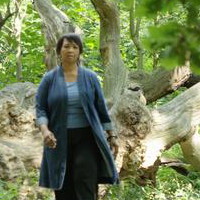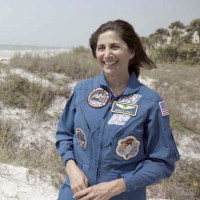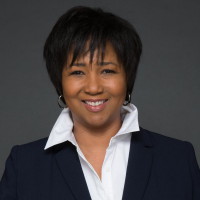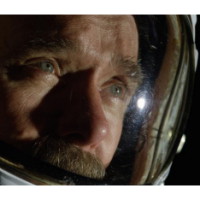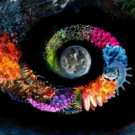Guide to Nat Geo Channel's ONE STRANGE ROCK: Q&A w/ Producers, Astronauts + Overview, Episode Guide
Maj Canton - March 26, 2018
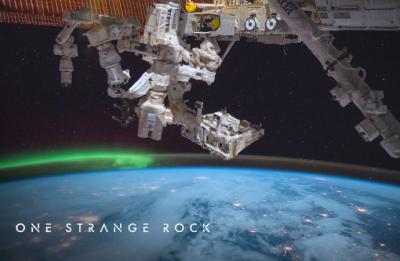
National Geographic Channel premieres the ten-part cinematic event series, host by Will Smith on Monday, March 26, 2018 at 10pm that explores the fragility and wonder of planet Earth, a curiously calibrated speck of a planet in the harsh universe. There really is no place like home. National Geographic, acclaimed filmmaker Darren Aronofsky and award-winning producer Jane Root join forces on an epic series that redefines science and natural history filmmaking. ONE STRANGE ROCK is a mind-bending, thrilling journey exploring one of the most peculiar, unique places in the universe. It’s the extraordinary story of why life as we know it exists on Earth, brought into perspective by the only people to have left it behind: astronauts. This 10-part series brings cameras where they’ve never been before, having filmed in 45 countries, on six continents and from outer space on the ISS. ONE STRANGE ROCK guides viewers through our vulnerable speck of a planet among the vast, harsh cosmic arena, revealing the twists of fate that have allowed life to emerge, survive and thrive on Earth. The series explores some of the questions many of us take for granted: Why is Earth the only planet (that we know) to support life? How fragile are the perfectly tuned systems that sustain this living planet? What are the greatest threats to the environment and human existence on Earth? Are we alone, and where did we come from? Is there really no place like home? Smith contemplates these questions and guides viewers on a full-sensory, unprecedented exploration, bolstered by an elite group of eight astronauts who provide their unique perspectives and relate personal memoirs of the planet seen from a distance. In order to tell this definitive story of our planet, ONE STRANGE ROCK has been in production for more than two years in 195 locations with 139 shoots, capturing footage equivalent to a 22-year movie marathon.
This past January at the Television Critics Association (TCA) Winter Press Tour the National Geographic Channel presented a panel which included the episode hosts Astronauts Mike Massimino, Leland Melvin, Mae Jemison, Chris Hadfield, Nicole Stott, Jerry Linenger, Peggy Whitson, Jeff Hoffman and Executive Producers Darren Aronofsky and Jane Root. Here are a few highlights (edited for clarity and readability) from that panel.
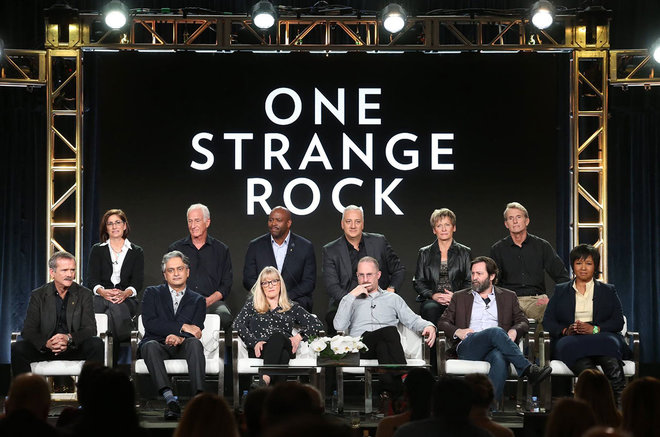
Top Row (L-R): Nicole Stott, Jeff Hoffman, Leland Melvin, Mike Massimino, Peggy Whitson, and Jerry Linenger.
Bottom Row (L-R) Chris Hadfield, Arif Nurmohamed, Jane Root, Darren Aronofsky, Ari Handel, Mae Jemison.
Television Critics Association Winter 2018 Press Tour.
|
|
|
|
Question: What were you looking for with having Will Smith in the David Attenborough role for your series? Jane Root: Will is every man. He’s the person who’s going to hold the audience’s hand and say, “Come look at how astounding the Earth is.” I think Will just epitomizes joy. Question: Darren, what do you bring to the project? Darren Aronofsky: What was exciting about this was taking all of it – astronomy, anthropology, biology, chemistry, physics – and trying to blend them together to talk about this home we’re all living on. We sent teams all over the planet and up into the Space Station, so I think my idea was to create a visual bible that all these different teams could follow so that there was a relationship between all the different footage. When we went to the moon, there’s this idea that we actually discovered Earth for the first time. I think that kind of perspective is something very spiritual. Everyone who went out there had this experience and we try to capture it through the beauty of the planet. |
|
|
|
|
|
|
Question: What are you hoping millennials get from this show? Chris Hadfield: I used to be excited to get National Geographic in the mail, to see things I barely even dreamed about. The millennials now have tremendous access to information, but how is it that you present the same idea in a way as visually compelling? To me, it’s today’s version of what it felt like to get one of those magazines. Mae Jemison: We have an opportunity to connect with something everyone does – look up. That ability to connect with something all around us is what’s really important in this. Arif Nurmohamed: I think millennials are smart. What we’re trying to do is represent not a narrow view of the world around them, but that it’s actually really complex and really extraordinary and really astonishing. I think that will appeal to a younger audience because the world is connected in ways it wasn’t twenty and thirty years ago. |
|
Darren Aronofsky: As far as millennials, I can’t tell you the amount of times I’ve been to a millennial party and they got “Planet Earth” and all those BBC shows playing in the background. |
|
|
|
|
|
Question: The planet is facing many crises – global warming, terrorism, etc. – and astronauts acquire a unique perspective from space. What are common themes you can talk about? Jeff Hoffman: It’s a planetary perspective. We’re all hoping that through ONE STRANGE ROCK, viewers will be able to share this perspective. If we’re going to solve our problems on Earth, it has to be done on a planetary level. Mike Massimino: On my first space flight, I got to space walk. And our pilot, Digger, really wanted me to tell him what it was like. “I don’t want you to sugarcoat it, I want to know what it’s really like.” So once I got back from the walk, Digger’s waiting right there in the airlock so I said, “Digger, you’ll never believe it. The Earth is a planet.” It’s not this two-dimensional experience. It’s not this safe place. It’s a beautiful planet with all this chaos. You can see the planet and you can see the universe and we’re amongst that. We’re all these space travelers on Earth, that’s our spaceship. When I was out there, I got the sense this is how we’re supposed to see it. This show brings that to everyone. |
|
Mae Jemison: The first thing I saw from space was Chicago, my hometown. I had this connection back there in Chicago when I was a little girl that it felt right that I could be on this Earth. It felt right that I could be in space. It meant that I was a part of this universe. What I’m hoping ONE STRANGE ROCK does is take us through the story of Earth’s lifelessness becoming life, what we see going to many different countries and cultures, and showing us we belong here, that we’re connected. As people are able to do that, then, hopefully, they’ll be able to understand that they have a responsibility and power and authority and right to intervene and do something so that this remains our home. Arif Nurmohamed: I think the ultimate achievement is if the audience comes away from something and they look around with fresh eyes. That’s what we’re trying to achieve with this series. Leland Melvin: The moment that really changed my life in space was when we had a meal in the Russian segment [of the space station.] And we have this meal with people we used to fight against – Russians and Germans. We have African-American, Asian, French, German, Russian, first female commander. It was when I broke bread with my colleagues, looking back at the planet that I had this orbital shift, this perspective change. And that’s what we wanted, to help bring that message of family and home back down to the planet. |
|
|
|
|
|
Question: Are you fearful of the world, of projections that we only have so long to exist unless we change? Do you try to send messages of change? Are you scared for us? Nicole Stott: I don’t know if “scared” is the word. It’s a really respectful appreciation; those are the words I would use. And I feel the same way about our planet. That’s why I’m so thankful to be part of this project, because to me it’s reintroducing us to our home. It’s reintroducing us to Earth in a way that we’ve never seen before. What you get is a whole new lesson about it and that we are on a planet and that we are all Earthlings. And there’s this opportunity through these episodes to separate from Earth in a way that ultimately has you feeling more connected to it than you do right here down in the middle of it. It will make you more aware. It will pull you together in a way that’s significant so that you know you have a connection to the person on the other side of the planet. It will make you more respectfully appreciative. |
|
|
|
Astronaut Mae Jemison. Photo Credit: National Geographic/Stewart Volland. |
Question: What is the commonality between the astronauts, the quality that you all share? Mae Jemison: Well, we have to pay attention. There are different things that we have to do, like, be fairly OCD about things. There are those kinds of pieces. But it’s also an openness to see the world differently and to be able to trust other people and put your lives in their hands. Being respectful and being able to see the world in a much larger perspective. I think that’s a commonality that’s shared. Nicole Stott: When I think about being in space now, my memory is just this glowing, stunning, overwhelmingly, impressively beautiful place that is all those colors we know Earth to be but on this hyped-up level like I could never really imagine. My whole mission now – I think we all have this mission now – is how do we share the space flight experience? I’m using art. We have professors. We have musicians and educators. It is like you are energized and excited about how you can share the experience of what’s going on in space in a way you hope everybody gets. And ONE STRANGE ROCK, not just because I’m up here on this panel and they invited me to participate, but even if I wasn’t, I would watch this in awe, like I did looking out the windows of a spaceship. |
|
|
|
|
Question: Chris, could you tell us about being temporarily blind in space? Chris Hadfield: During one of my space walks, there was a contamination in my suit, which made one of my eyes tear up. But water doesn’t disperse in space so eventually the tear grew big enough to cover both eyes. You can react a lot of different ways when that happens. If you think about it, every time you close your eyes you’re blind. And we train for things to go wrong. I ended up letting oxygen out of my tank to evaporate the tears and my eyes cleared. And if anything, it made the space walk more enjoyable because we had reached a challenge and overcame it. And how do you turn that experience into something that everybody else can not only marvel over but learn from? I think that’s what attracted all of us to ONE STRANGE ROCK. |
|
|
EPISODE GUIDE
"Gasp" |
||||


